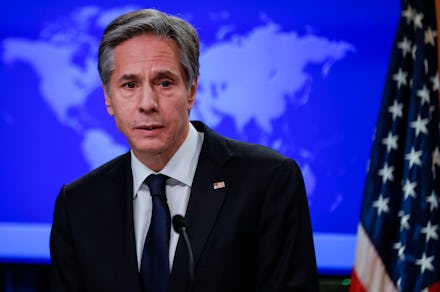Here's what the secretary of state, a.k.a. America's top diplomat, really does

With a new president comes a new administration. There have been rumors about who President Biden might choose for his Cabinet picks for months, but he's finally been able to start bringing people in in his first week-plus in office. Last week, Antony Blinken was confirmed as secretary of state. Blinken will be taking on one of the more well-known Cabinet positions, dealing with foreign affairs and representing the U.S. around the world. But there's more to what the secretary of state does than just being America's top diplomat.
As a whole, the Cabinet's job is to advise the president on the various issues that come up in the course of running the country. It would be unreasonable to expect any one person to be able to offer advice on everything under the sun, so each position basically handles one specific policy area. The Cabinet automatically includes the vice president plus the heads of 15 executive departments including the attorney general; the secretaries of defense, education, and transportation; and a few other positions, like White House chief of staff.
While Biden nominates the secretary of state, any new person coming into a Cabinet position needs confirmation from the Senate. Politico reported that Blinken, who served as both deputy national security adviser and deputy secretary of state under former President Barack Obama, had bipartisan approval with a vote of 78-22. He'll start working immediately — and here are a few of the particularly interesting duties and powers that come with his new gig.
The president's main adviser on foreign affairs
If you ever want to know what a certain Cabinet position does, just look at the department they preside over for a hint. In this case, the secretary of state is the head of the U.S. Department of State, which handles foreign policy. So, the secretary of state serves as the president's chief foreign affairs adviser.
Congress created the position in 1789 as a successor to the Department of Foreign Affairs. According to the State Department's website, the role has basically been unchanged since then. Some of the main responsibilities include advising the president on the appointment of diplomatic representatives, like U.S. ambassadors, as well as negotiating treaties and representing the U.S. at multinational forums.
Ahead of his confirmation, Blinken appeared before the Senate Foreign Relations Committee, where Republicans like Sen. Lindsey Graham (S.C.) were impressed by how much Blinken agreed with them. Blinken told the committee he would use "humility and confidence" in his approach to the position, referring to them as the "flip sides of America's leadership coin." He explained: "Humility because we have a great deal of work to do at home to enhance our standing abroad. ... But we'll also act with confidence that America at its best still has a greater ability than any country on earth to mobilize others for the greater good."
The official custodian of the Great Seal of the United States
Even if the name seems unfamiliar, you know the Great Seal of the United States because you've likely seen it before. The seal is used for official documents like treaties, but you can also find it on every passport. It's that image of a bald eagle holding an olive branch (to represent peace) and arrows (to represent war) in its talons with a shield over it.
The Great Seal itself is displayed in the Exhibit Hall of the State Department in Washington, D.C. And, again, as head of the State Department, the secretary of state is responsible for its keeping, so Blinken is the current custodian of the Great Seal. It's not really a duty that requires a bunch of effort on any Secretary of State's parts, but it's an interesting honor of his position.
The fourth in the presidential line of succession
Pretty much everybody knows that if anything happens to make the president unable to fulfill their duties, the vice president is next in line for the office. But after that, who?
Well, the order goes: the speaker of the House, the president pro tempore of the Senate, and then the secretary of state. What's notable is that currently, everybody in this list is a member of the Democratic Party, after the Democrats gained control of the Senate thanks to the Georgia runoffs.
It's very unlikely that Blinken or any future secretary of state would become president via the line of succession — in fact, it hasn't happened in the country's entire history. Still, the role can be seen as a potential stepping stone into the presidency. Six people were elected president after serving as secretary of state, including Thomas Jefferson, James Madison, and James Monroe. A few more names you might recognize who served as secretary of state? John Kerry, Hillary Clinton, Condoleezza Rice, Madeleine Albright, and Henry Kissinger.